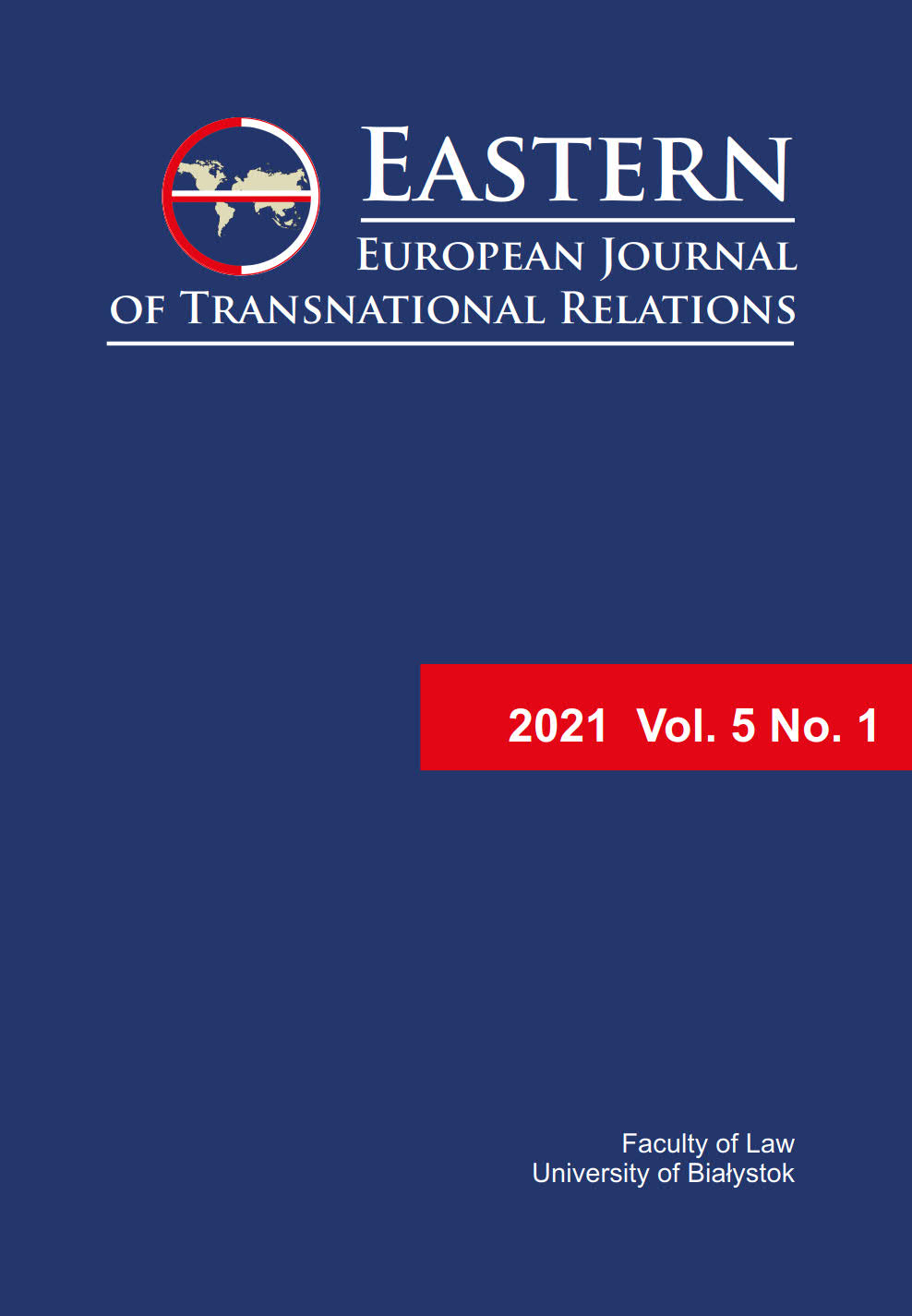Considerations on Limits to Dynamic / Evolutive Interpretation of Constituent Instruments of International Organizations (with the Particular Reference to the UN System)
DOI:
https://doi.org/10.15290/eejtr.2021.05.01.01Keywords:
dynamic interpretation, evolutive interpretation, international organizations, international law, UN SystemAbstract
International organizations, for the purpose of further considerations are these established by multilateral treaties constituting their internal legal order and establishing legal personality for them, which is independent and separate from their member states. The emphasis in this article is on the UN and its Specialized Agencies. Since in practice their constituent instruments are interpreted on the daily basis in the continuous process of performing their functions and filling the gaps, some of extensive interpretations may lead to informal modifications of the constitutional instruments. To examine whether there are any limits to the dynamic / evolutive (extensive) interpretations is of grave significance both for international law doctrine and practice, as well as political reality. In conclusion: the Report and the IDI Resolution adopted on 4th September, 2021, are the good ground for better understanding of recent developments in the daily lives of the UN System.
Downloads
References
Bernhardt, R. (1995). Interpretation in International Law. In: R. Bernhardt (Ed.), Encyclopedia of Public International Law, vol. II. Amsterdam-Lausanne-New York-Oxford-Shannon-Tokyo: Elsevier.
Ehrlich, L. (1957). Interpretacja traktatów. Warszawa: Wydawnictwo Prawnicze.
Ehrlich, L. (1928). L’interprétation des traités. RCADI, 24(4), 12-32.
Hudson, M.O. (Ed.) (1934). World Court Reports, vol I (1922-1926). Washington: Carnegie Endowment for International Peace.
Lankosz, K. (1985). Interpretacja statutów organizacji międzynarodowych. Kraków: Zeszyty Naukowe Akademii Ekonomicznej w Krakowie – Seria Specjalna „Monografie”.
Lankosz, K. (Ed.) (2014). Wielka encyklopedia prawa, Tom IV – Prawo międzynarodowe publiczne. Warszawa: Fundacja Ubi Societas, Ibi Ius.
Kocot, K. (1971). Organizacje międzynarodowe. Systematyczny zarys zagadnień prawa międzynarodowego. Wrocław-Warszawa-Kraków-Gdańsk: Ossolineum.
Kuźniak, B., Marcinko, M. & Ingelevič-Citak, M. (2017). Organizacje międzynarodowe. Warszawa: Wydawnictwo C. H. Beck.
Nahlik, S.E. (1976). Kodeks prawa traktatów. Warszawa: Wydawnictwo PWN.
Shermers, H.G. (1972). International Institutional Law, vol. II. Leiden: Brill.
de Vattel, E. (1758). Le droit des gen sou principes de la lci naturelle, vol 2, Londres.
Opinions and other documents:
Alvarez A., Recueil CIJ, 1950 concerning the admission of new members to the United Nations.
Alvarez A., Recueil CIJ, 1951 concerning reservations to the Convention on genocide.
The report of the Institute of International Law: Are there Limits to the Dynamic Interpretation of the Constitution and Statutes of International Organizations by the Internal Organs of such Organizations (with Particular Reference to the UN System)? / Y a-t-il des limites à l’interprétation dynamique de la Constitution ou du statut des organisations internationales par les organes de celles-ci, avec une référence particulière au système des Nations Unies?, „IDI Annuaire” 2021.
The resolution of the Institute of International Law of 4 September 2021: Limits to Evolutive Interpretation of the Constituent Instruments of the Organizations within the United Nations System by their Internal Organs / Limites à l’interprétation évolutive des actes constitutifs des organisations du système des Nations Unies par leurs organes internes.
Downloads
Published
Issue
Section
License
Copyright (c) 2021 Kazimierz Lankosz

This work is licensed under a Creative Commons Attribution 4.0 International License.
1. The Author declares that he or she has created the written work and holds exclusive and unlimited copyright /both moral and property rights/ and guarantees that no third parties have rights to the work.
2. In the view of the Copyright and Related Rights Act, a work must fulfill the following criterion:
a) be a manifestation of creative work,
b) have an individual character („author’s personal stamp”),
c) have a set form.
3. The Author declares that the text has not been previously published (under the same or different title, or as a part of another publication).
4. The Author allows (grants a non-exclusive license) the publishing house of University of Białystok to use the scholarly text to:
- preserve and multiply by means of any technique; save in a digital form with no limitations as to the manner and form of digital preservation;
- upload online with no limitations as to the place and time of access.
5. The Author grants consent for editorial changes made in the work.
6. The Author grants the University of Białystok rights free of charge for the duration of property copyright with no territory limits. The University has the right to grant sublicenses in the acquired rights.
7. Granting a non-exclusive license allows the Author to preserve their rights and allows other parties to make use of the work according to sublicensing agreement with provisions identical as those of Attribution 4.0 Internacional License (CC BY 4.0), available online at: https://creativecommons.org/licenses/by/4.0/. License to all its content published from 2023 and CC BY-NC-ND 4.0 to all its content published from 2017 to 2022.
8. The Agreement has been concluded for an indefinite period of time.
9. Because of costs born in preparation of the work for publishing, the Parties oblige themselves to act in good faith and refrain from declining to grant licenses.
10. To all matters not settled herein, provisions of the Civil Code and Copyright and Related Rights Act of 1994, February 4 shall apply.
11. All disputes shall be resolved by a court of local jurisdiction for the place of seat of University of Białystok.


